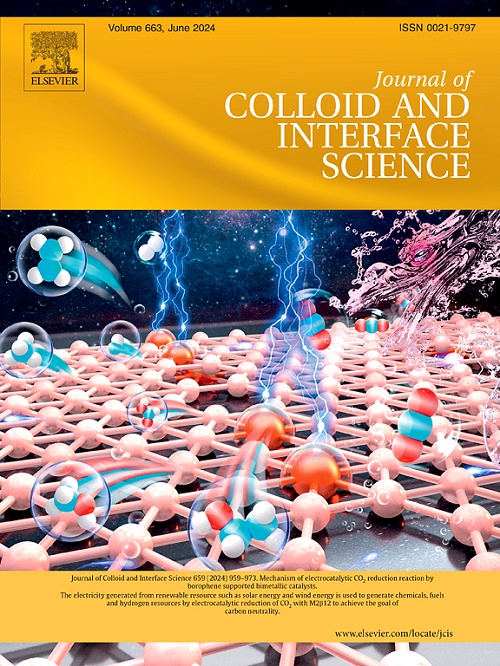Microporous poly(aryl piperidinium) hydroxide exchange membranes with multi-directional branched structure for high performance fuel cells
IF 9.4
1区 化学
Q1 CHEMISTRY, PHYSICAL
引用次数: 0
Abstract
Hydroxide exchange membranes (HEMs) are important materials for energy conversion devices in hydroxide exchange membrane fuel cells (HEMFCs). This study details a series of multi-directional branched HEMs containing octaphenylcyclotetrasiloxane (OCSi). The OCSi structure allows for the establishment of continuous OH− conducting channels within the membrane while addressing the prevailing trade-off between ionic conductivity and size/mechanical stability. Thanks to the formation of fine microphase-separated morphologies, the quaternized poly(octaphenylcyclotetrasiloxane-terphenyl-piperidinium) (QPOCSi-TP-2) membrane has high conductivity (152.9 mS cm−1 at 80 °C), excellent mechanical stability (tensile strength of 76.5 MPa) and outstanding chemical stability (1500 h in 5 M NaOH at 80 °C). In H2/O2 cell tests at 80 °C, the peak power density of the QPOCSi-TP-2 membrane reaches 1.26 W cm−2. During 120 h of operation at 100 m A cm−2, the voltage degradation rate of the cell is 1.02 mV h−1.

高性能燃料电池用多向支化结构聚芳基氢氧化铵微孔交换膜
氢氧交换膜(HEMs)是氢氧交换膜燃料电池(hemfc)中能量转换装置的重要材料。本研究详细介绍了一系列含有八苯基环四硅氧烷(OCSi)的多向分支hem。OCSi结构允许在膜内建立连续的OH -导电通道,同时解决了离子电导率和尺寸/机械稳定性之间的普遍权衡。由于形成了精细的微相分离形态,季铵盐化聚(八苯环四硅氧烷- terphenylpiperidinium) (QPOCSi-TP-2)膜具有高电导率(80℃时152.9 mS cm−1)、优异的机械稳定性(抗拉强度76.5 MPa)和优异的化学稳定性(80℃下5m NaOH中1500 h)。在80℃的H2/O2电池测试中,QPOCSi-TP-2膜的峰值功率密度达到1.26 W cm−2。在100 m A cm−2下工作120 h时,电池的电压降解率为1.02 mV h−1。
本文章由计算机程序翻译,如有差异,请以英文原文为准。
求助全文
约1分钟内获得全文
求助全文
来源期刊
CiteScore
16.10
自引率
7.10%
发文量
2568
审稿时长
2 months
期刊介绍:
The Journal of Colloid and Interface Science publishes original research findings on the fundamental principles of colloid and interface science, as well as innovative applications in various fields. The criteria for publication include impact, quality, novelty, and originality.
Emphasis:
The journal emphasizes fundamental scientific innovation within the following categories:
A.Colloidal Materials and Nanomaterials
B.Soft Colloidal and Self-Assembly Systems
C.Adsorption, Catalysis, and Electrochemistry
D.Interfacial Processes, Capillarity, and Wetting
E.Biomaterials and Nanomedicine
F.Energy Conversion and Storage, and Environmental Technologies

 求助内容:
求助内容: 应助结果提醒方式:
应助结果提醒方式:


